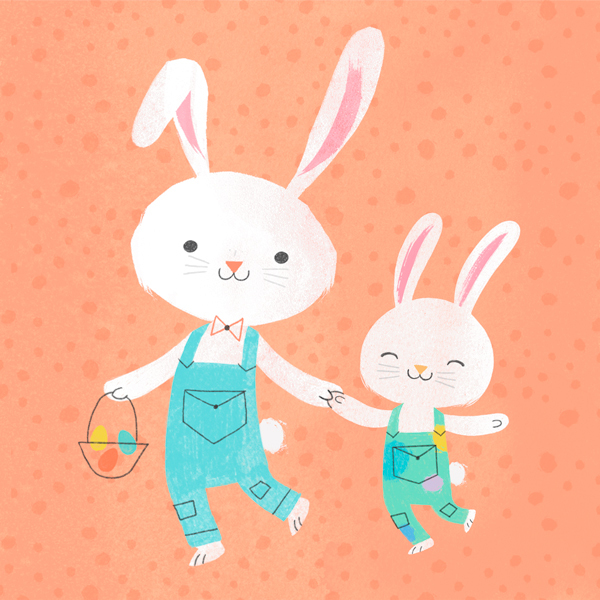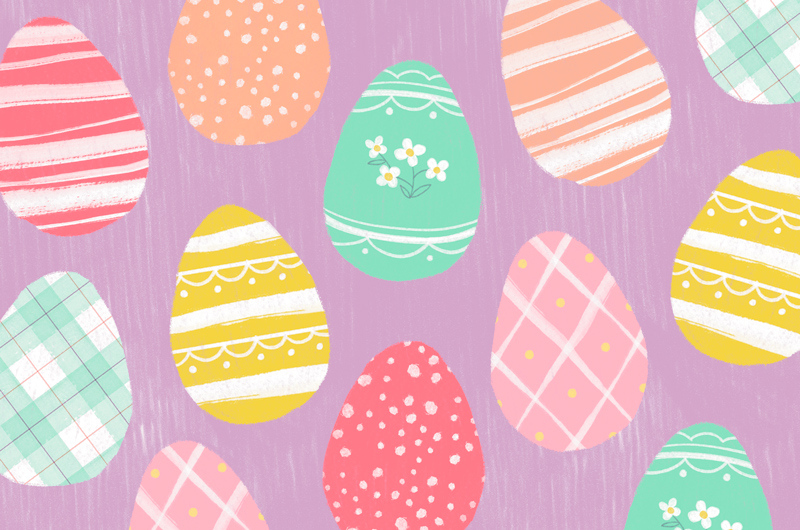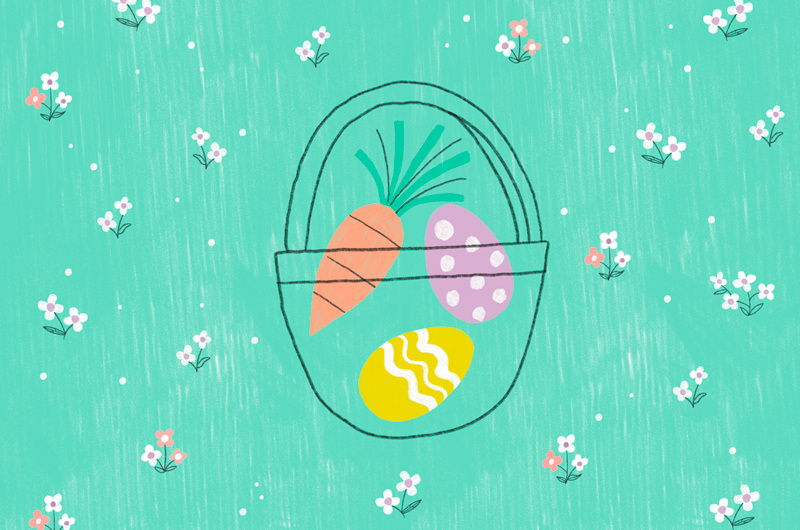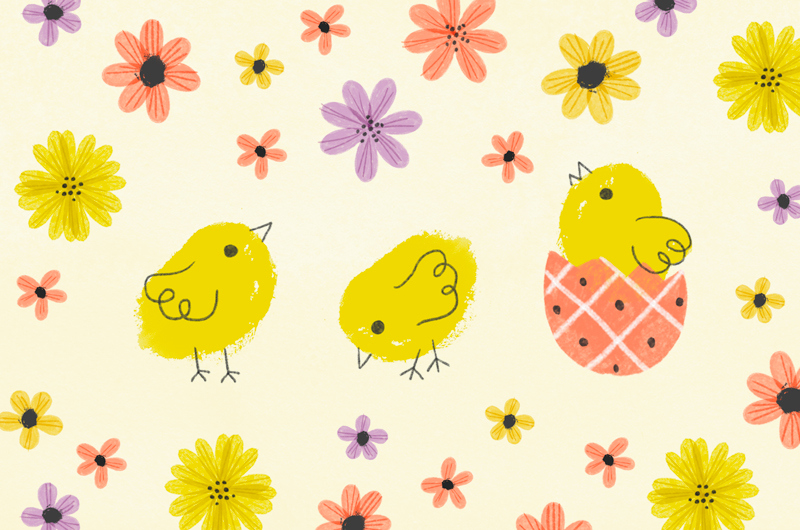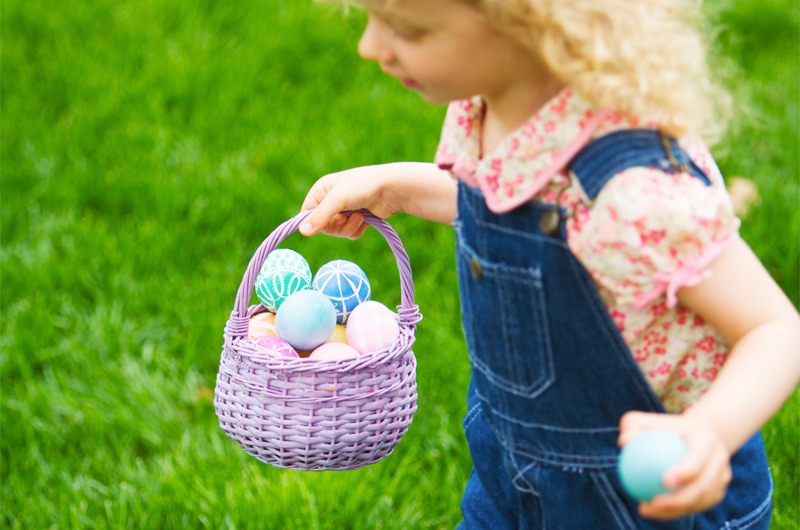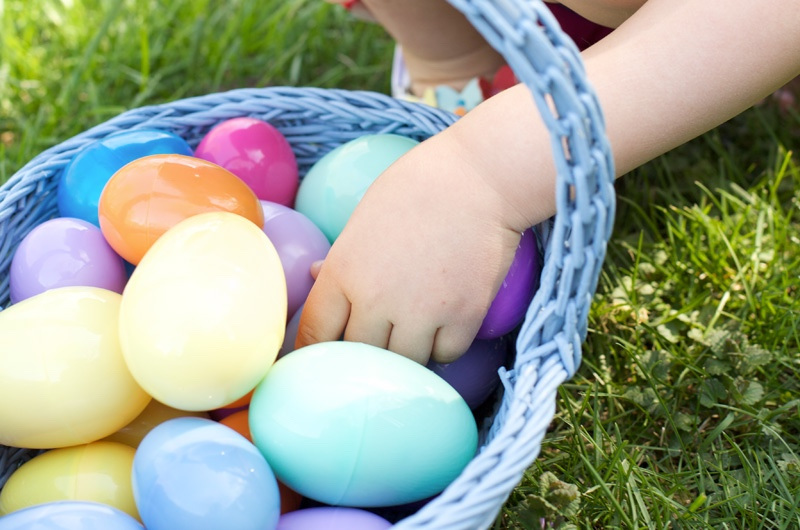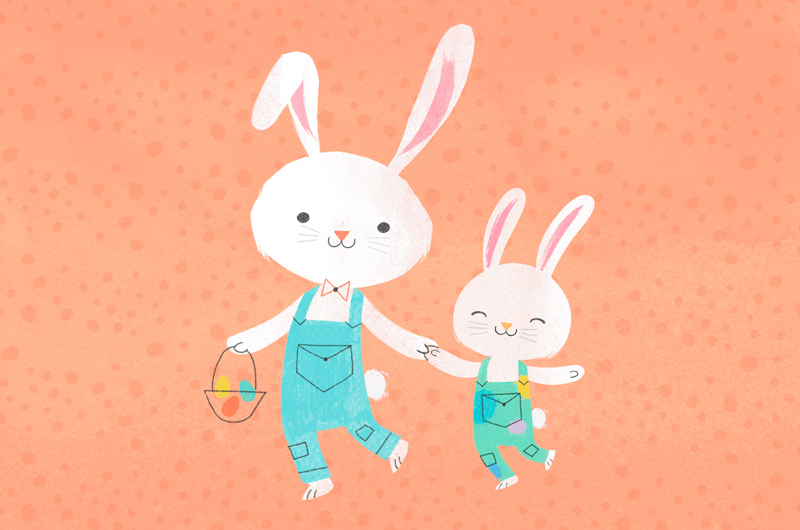It’s easy to go down a deep Pinterest rabbit hole as you plan your
day. But there’s no shame in keeping things simple and classic.
Eggs
Real eggs are
great for small hunts. That said, the risk of one going unclaimed and
stinking up a corner of the patio is high. But if you love getting your
dip-dye on and can’t resist using real eggs, just be sure to do a count
right before hiding and after the hunt to make sure all have been found. This will help you avoid a smelly situation down the road.
Plastic eggs, on the other hand, are inexpensive and just made for
larger Easter egg hunts. There’s no messy markers or dyes, and the
bright colours stand out in just about any environment. Plus, you can
save and reuse them year after year if you want to.
When you’re figuring out numbers, start with a dozen per kid and go
up or down. The tiniest hunters may be perfectly well-occupied playing
with a single empty egg all morning. Older kids may be more quantity
driven, but you can solve all sorts of problems by setting limits on how
many eggs each hunter can find.
Pro tip: Colour-code the eggs
Use different colours of plastic eggs—or add stickers—to keep things
fair or signal special eggs for hunters with food allergies or specific
needs:
- For large hunts, colour-code—and hide—the eggs by age group. Eggs for
littles can go in plain sight, with the challenge level going up with
each group.
- For smaller or family hunts, assign each kiddo or family a different colour.
- If you’re putting treats inside the eggs, borrow a tip from
trick-or-treating: Teal or blue signals an egg that contains trinkets or
sensory toys instead of candy. (Find some of our favourite candy alternatives here.)
Treats
You can fill plastic eggs with just about any small treats. Pro-tip: Seal them with a tiny bit of clear tape.
- Candy, from classic jelly beans and chocolate eggs to malt balls and gummies. No need to fill eggs to capacity—a few pieces in each egg is plenty.
- Tiny toys and trinkets. Consider hiding little stuffed animals, stickers, jewelry, school or craft items.
- Messages. Write or print jokes and riddles, drawings, Bible verses or cartoons on little slips of paper.
- Money. Make the eggs jingle with a few coins—or raise the stakes with higher value eggs for older kids.
- Special prizes: Make a special prize egg—maybe it’s gold or bigger than the rest—with more valuable treasure or a voucher to exchange for a bigger prize, like an Easter storybook, stuffed animal or a cute set of bunny ears.
Baskets
Even if you’ve specified BYO Basket, it’s a good idea to keep a few extra baskets, bags or buckets on hand for those who forget, or for last-minute guests.
Decorations
Set the scene with a fun banner and some simple Easter decorations. Check out our Easter decoration ideas here.
Pro tip: Name your eggs
For small and family egg hunts, create special “name egg” for each
hunter. Then encourage everyone to find their own name egg. If you see
someone else's name egg, give them a hint or a “hot or cold” tip—but
only if they ask for it.
A few more ideas:
- Add names with stickers, label-makers or markers.
- Use bigger plastic eggs and fill them with treats based on each kid’s favourite candy or interests.
- Draw names and let each child make and fill an egg for someone else in the family or neighbourhood.
- Instead of names, decorate the eggs to look like the kiddos.
- Hide little kids’ name eggs in easy-to-find spots; hide big kid or
adult name eggs in trickier (or even ornery) places for added fun.
